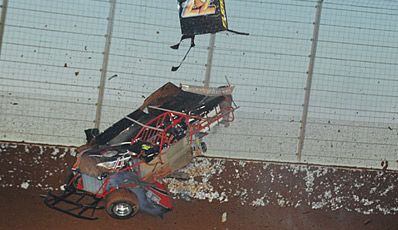
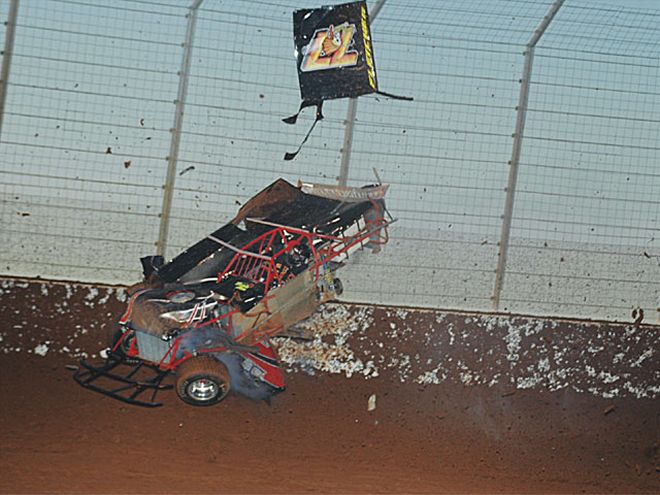
Clearly, racing is a dangerous sport and despite the best efforts of safety manufacturers you'll never eliminate all the risk. While fatalities and serious injury will continue to be an unfortunate part of our sport, now more than ever technology has led to numerous improvements in safety equipment. With the offerings from today's manufacturers there is no excuse not to take every advantage available. But not everybody does.
Most racers know that a good helmet, quality firesuit and a well made rollcage are the first lines of defense against serious injury in a car, but there are other items that will enhance your ability to walk away from a wreck. Here we take a look at a few.
Most major sanctions require you to wear an SFI-rated firesuit whose rating choice is most often left up to you, the racer. In order to make the best selection that offers you the most protection for your budget, you need to understand TPP or Thermal Protective Performance. TPP is a rating system contained within the SFI specification 3.2A for firesuits that is based on the garment's fire retardant capabilities in the presence of both direct flame and radiant heat. The purpose of TPP is to measure the length of time the person wearing the garment can be exposed to a heat source before incurring a second degree, or skin-blistering, burn.
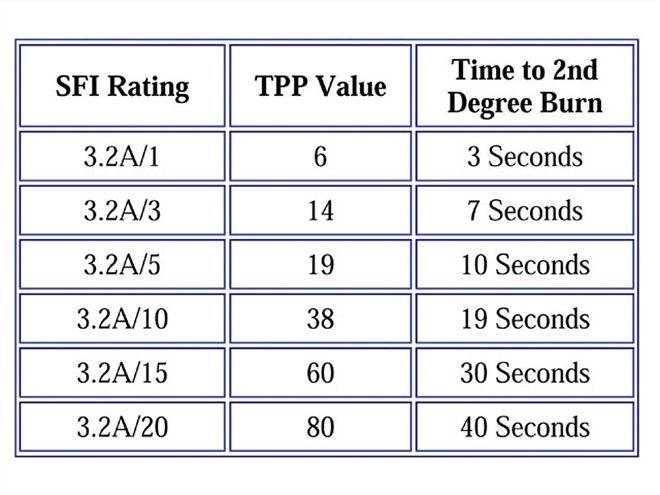 Chart A
Chart A
Now here's something you may not know: Most racer burns are caused by heat transfer rather than direct flame. That's important, so keep it in mind. Back to TPP for a minute. The TPP rating is the product of exposure heat flux and exposure time. The TPP results can be converted to the time before a second degree burn occurs. The higher the garment rating, the more time before a second degree burn occurs.
Chart A (above) shows the various SFI 3.2A ratings as well as their corresponding TPP value. While the rating 1,3,5,etc., is important, the key number is TPP. For example, the minimum TPP rating to achieve a 5 rating is 19 which gives you 10 seconds of protection before yielding a second degree burn, however because of the range in the rating system you can also have a 5 rated suit with a 35 TPP rating which actually gives you 17 seconds of protection before a second degree burn. Many manufactures publish the TPP of their individual garments, but those who do not are more than willing to share it with you if you call and ask them.
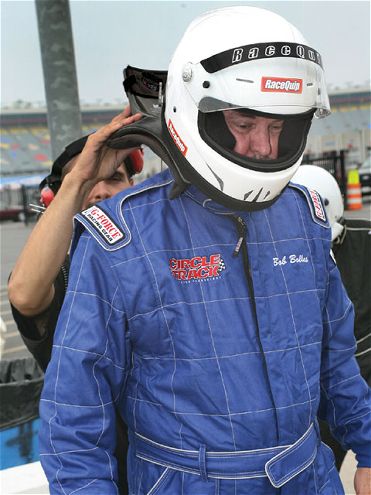 Bob Bolles' G-Force 545 two-layer suit is SFI 5 rated but because of its TPP rating of 23 it gives him almost two more seconds of protection than a 5 rated suit with the minimum TPP of 19. Kevin Thorne
Bob Bolles' G-Force 545 two-layer suit is SFI 5 rated but because of its TPP rating of 23 it gives him almost two more seconds of protection than a 5 rated suit with the minimum TPP of 19. Kevin Thorne
So now that you know an SFI 5 rated garment with a TPP value of 19 gives you 10 seconds before you get a second-degree burn and an SFI 1 rated garment with a TPP value of 6 gives you 3 seconds of protection before you get that same burn, why would you wear a 5 fire suit and 1 gloves? Believe it or not it does happen. Mixing SFI ratings somewhat defeats their purpose. While all SFI rated garments offer protection, consider this example when mixing SFI ratings. You are wearing a SFI 5 suit but you have on a pair of 1 gloves. You get into an accident where the car catches on fire and the flames come in the cockpit. It takes you eight seconds to get out of the car. Because you were wearing a 5 rated suit your body escaped any major damage, however your hands now have second-degree burns all over them because the 1 rated gloves gave up the protection after just three seconds. Now you're sidelined for months as the burns heal.
Make sure when choosing gloves and shoes you match your SFI ratings so that your extremities have the same amount of protection as your core.
Along those same lines...are your socks fire retardant? There has been more than one racer who walked away from a firey wreck only to discover some nice burns on his or her ankles. Thanks to mid-rise shoes and the lack of fire retardant socks they are taking a hiatus from racing until their burns heal.
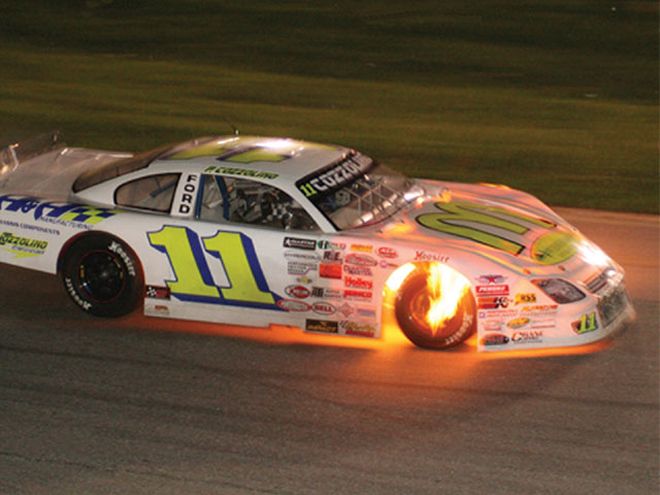 Properly matching SFI ratings will enhance your chances of surviving a fire.
Properly matching SFI ratings will enhance your chances of surviving a fire.
It may be one of the easiest and cheapest safety measures you can take. Buy some fire-retardant underwear. Remember what we said earlier; the majority of racer burns are caused by heat transfer rather than direct flame? Good, because insulation is the best way to prevent this kind of burn. How do you get additional insulation in your racing suit? The answer is easy. Using multiple layers of fabric helps keep the heat source away from the skin longer because each layer creates air gaps that have to heat up before that heat can transfer. The extra seconds gained with each layer are precious to you safely escaping from a burning car.
Fire resistant underwear should be worn with every type of driver suit, especially single-layer suits. In the case of a single layer suit, having FR underwear will double the minimum protection time. While fire retardant underwear falls under a different SFI spec (3.3 for Driver Accessories), it does use the same TPP and flammability tests as the driver suits.
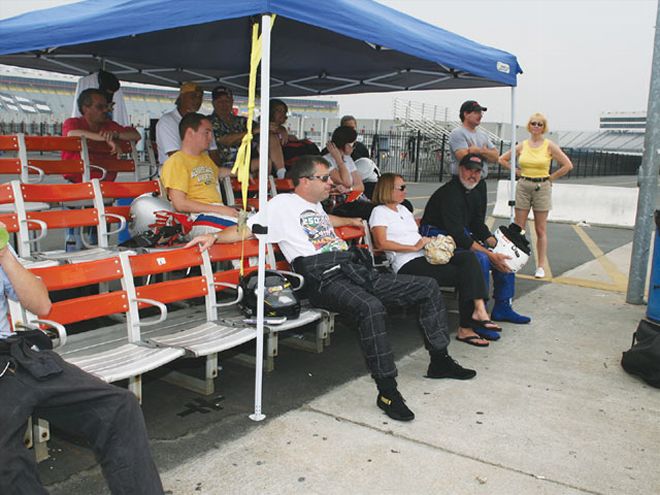 Adding fire retardant underwear, like the Carbon X Bob Bolles is wearing here, can, in some cases, double your protection time in the event of a fire.
Adding fire retardant underwear, like the Carbon X Bob Bolles is wearing here, can, in some cases, double your protection time in the event of a fire.
Let's do just a little more math. If you add underwear that has a TPP rating of say 10 to a suit that has a TPP rating of 23, you now have a total protection time of over 17 seconds. One final thought on layers and fit, a suit and underwear combination that is worn too tight will compress the air gaps created within the layers and allow heat to reach the skin faster. So make sure that you have the proper fit in your suit and accessories.
Beyond a good fit and having extra layers, there are other things you can do to optimize the protection performance of your driver suit. First and foremost, avoid wearing your suit while working on the car. We know that changing in and out of your suit between heat races and features may not only be inconvenient but in some cases even impossible. However, getting dirt and residue while working on the car on your suit ruins an expensive piece of equipment and invites a fire to burn you. Grease, fuel, oil, and even cleaning fluids can soak into the fabric and support the flames of a fire. Beyond the obvious, when any of those fluids burn they will also produce steam when exposed to heat and cause liquid vaporization burns.
Finally remember to follow the manufacturer's cleaning and care instructions to the letter when it's time to wash your racing suit. This goes for gloves, shoes and underwear too.
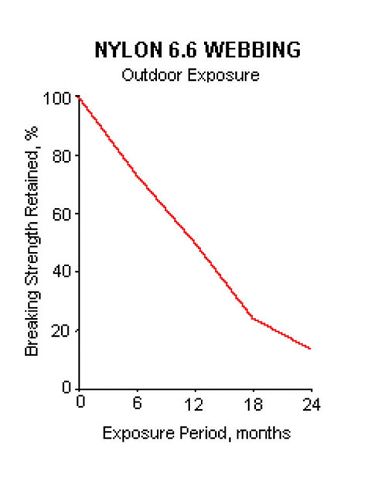 Chart B
Chart B
Restraints, window nets and any other safety harnesses must be maintained, inspected, and replaced or rewebbed every two years for one simple reason-over time they degrade from exposure to the elements. Prolonged exposure to sunlight can cause degradation of the webbing, the fibers that make up the webbing and the thread that holds the whole assembly together. As that degradation takes place, the webbing looses its structural integrity.
The webbing used in motorsports restraints is typically made with DuPont Nylon 6-6 or a similar product. According to test data from SFI, webbing loses about half of its strength in one year. Chart B (above) shows the rate at which typical belts will degrade over a 24 month period.
Looking at that graph, it doesn't take a rocket scientist to figure out why you need to replace the webbing every two years. Even a moderate g hit would easily snap old and weakened belts. Replace them or at the very least have them checked for recertification, if you don't, make sure your life insurance policy is paid up.
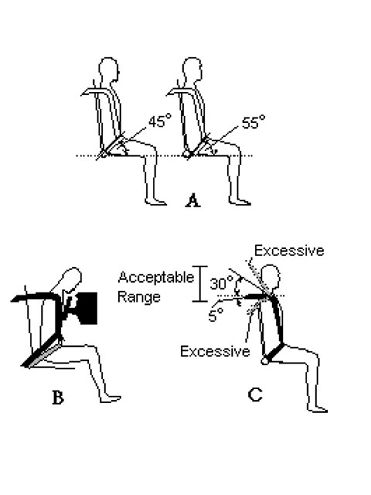 Chart C
Chart C
A big part of maximizing your safety has to do with proper component installation. Since we've been talking about belts we'll stick with that subject. Safety belts must pull from a straight angle in the event of an accident. When that happens, the mounting hardware minimizes the bending stress in that fitting and the whole system works properly. One of the easiest ways to ensure that happens is to make sure that when your belts are installed that no part of the straps are rubbing against any surface that can cause that webbing to fray. Remember to also periodically check the anchoring mechanisms to make sure they haven't loosened over time.
While securely-mounted belts are important you also have to remember that belts need to be as short as possible to reduce stretching for better control of driver movement in the event of an accident.
Chart C (previous page) shows some key angles that should be followed when designing the optimum fitment geometry to minimize movement of the belts. Lap belts perform best when mounted at an angle between 45 and 55 degrees relative to the longitudinal axis of the vehicle (Part A in Chart C). This angle allows the lap belt to properly restrain the pelvis in the event of an upward pull of the shoulder harness.
Part B of Chart C shows what happens with a system that has the wrong belt angle. The shoulder harness pulls the lap belt up off the pelvic area and into the abdominal region. A hard enough hit with this configuration and you are likely to hurt some internal organs.
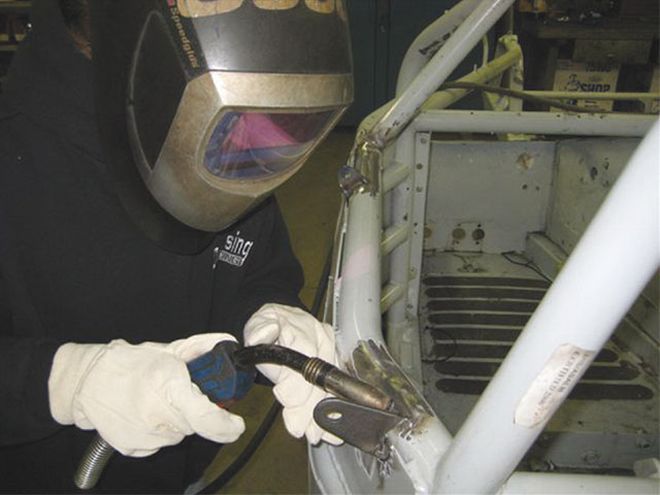 Pop Rivets have a place, and it's not on your window net. Do it correctly and weld in bottom brackets to the rollcage.
Pop Rivets have a place, and it's not on your window net. Do it correctly and weld in bottom brackets to the rollcage.
Finally, do not forget that the ideal position of the shoulder harness is anywhere between 5 degrees below and 30 degrees above the driver's shoulder, as seen in Part C of Chart C. An attachment point significantly below the driver's shoulder will result in a spinal compression injury, while one too far above the shoulder (greater than 30 degrees), will provide little resistance to forward motion of the driver's upper torso. In addition to overly stressing the mounting points, you run the high risk of hitting the steering wheel with your face or chest which could in turn cause a neck injury. The shoulder straps should also be 3-6 inches apart behind the driver's neck to prevent slippage off the shoulders.
Keep in mind that these installation tips are just suggestions based on SFI recommendations and our own personal experiences here at Circle Track. When preparing to mount your belts, you should always follow the installation instructions provided by the seat belt manufacturer and contact them directly should you have any questions.
Window nets are designed with two functions in mind. Number one, they keep your arms, head, etc., inside the car in the event of a hard crash or roll over. More importantly, and to some extent less thought of is Number two, the window net keeps foreign objects such as other car parts, debris, and more out of the driver's compartment. SFI rated window nets can sustain a lot of impact, but only if they are mounted properly. Proper mounting means having two top and two bottom brackets welded to the rollcage.
Frankly, it surprised us when we found out that many racers will use pop rivets to attach the bottom bar to their car's door panel. This may be cheaper and easier to do than welding the proper bracket in place, however it is far more dangerous. The pop rivet and sheet metal is nowhere near as strong as a good solid weld. Rivets cannot withstand the g-forces associated with even a medium hit and will just rip out of the panel like it was paper. So if you are one of those racers taking this short cut, rethink the purpose of that net and weld some good brackets in all four corners. It could just save your life.
Racing is an inherently dangerous sport and, while the tracks and sanctions have rules that promote safety, the final choice of what to wear and how to build your car is yours and yours alone. Safety starts with you, the driver, and just because your track says you need a minimum of a SFI 3.2A/1 suit doesn't mean you shouldn't upgrade to a SFI 3.2A/5. There are plenty of high-quality safety products on the market for a reasonable price. After all, it's pretty hard to race from a hospital bed or worse from six feet under.